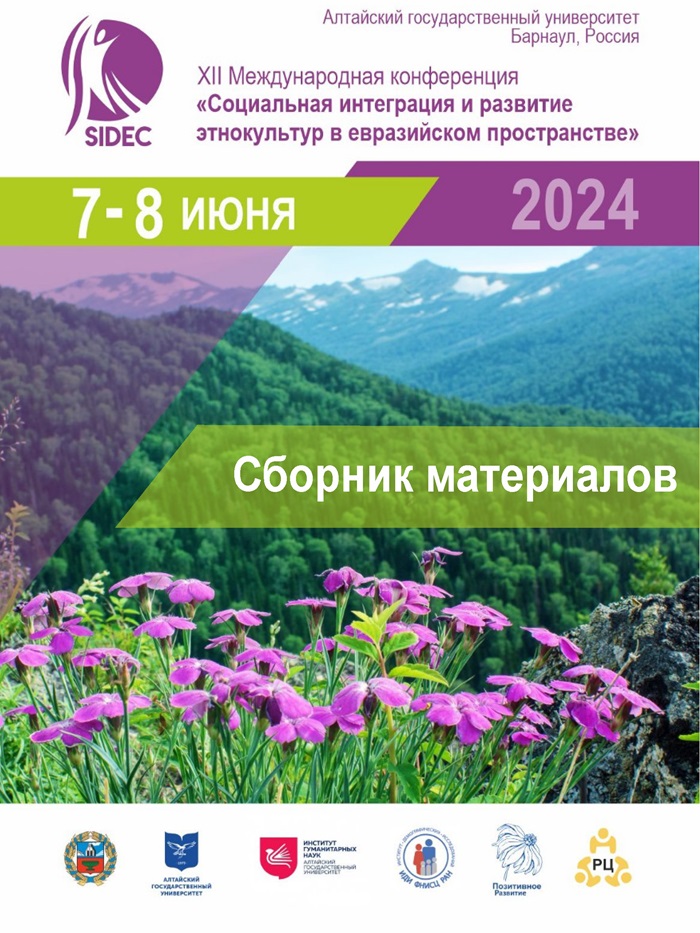RURAL IDENTITY: KEY MARKERS (BASED ON THE EXAMPLE OF KAZAKHS IN THE ALTAI REGION)
Main Article Content
Abstract
Rural territories of the Altai Territory, considered as local communities, are studied. Using the example of the Kazakhs of the Altai Territory (Kulundinsky district), the processes of nation-building are analyzed. Key markers that contribute to the formation of identity are identified: 1) institutions of integration, 2) appeal to history, 3) natural symbols, 4) toponymy, street naming practices 5) appeal to religion, beliefs, 6) local traditions, customs, 7) symbols of everyday life, 8) celebration practices, 9) national cuisine, 10) iconic figures. The analysis carried out allows us to draw a conclusion about the formation of ethnic and at the same time local identities.
Downloads
Download data is not yet available.
Article Details
How to Cite
[1]
Derendyaeva, A. 2023. RURAL IDENTITY: KEY MARKERS (BASED ON THE EXAMPLE OF KAZAKHS IN THE ALTAI REGION). Social Integration and Development of Ethnic Cultures in the Eurasian Space. 1, 13 (Apr. 2023), 122-126.
Section
Статьи
References
1. Баринова Н. Г. Этнокультурное развитие в селе Кирей // Социальная интеграция и развитие этнокультур в евразийском пространстве. 2016. №4-1. С. 167-174.
2. Волоснов Р. Ю. Культовое зодчество Кулундинской степи в конце XIX – начале XX в. // Известия АлтГУ. 2010. С. 134-137.
3. Гориявчева Т. А., Юсупова А. В. Итоги историко-этнографических исследований в селе Керей Кулундинского района Алтайского края // Полевые исследования в Верхнем Приобье и на Алтае: археология, этнография, устная история. 2009. С. 84–88.
2. Волоснов Р. Ю. Культовое зодчество Кулундинской степи в конце XIX – начале XX в. // Известия АлтГУ. 2010. С. 134-137.
3. Гориявчева Т. А., Юсупова А. В. Итоги историко-этнографических исследований в селе Керей Кулундинского района Алтайского края // Полевые исследования в Верхнем Приобье и на Алтае: археология, этнография, устная история. 2009. С. 84–88.

